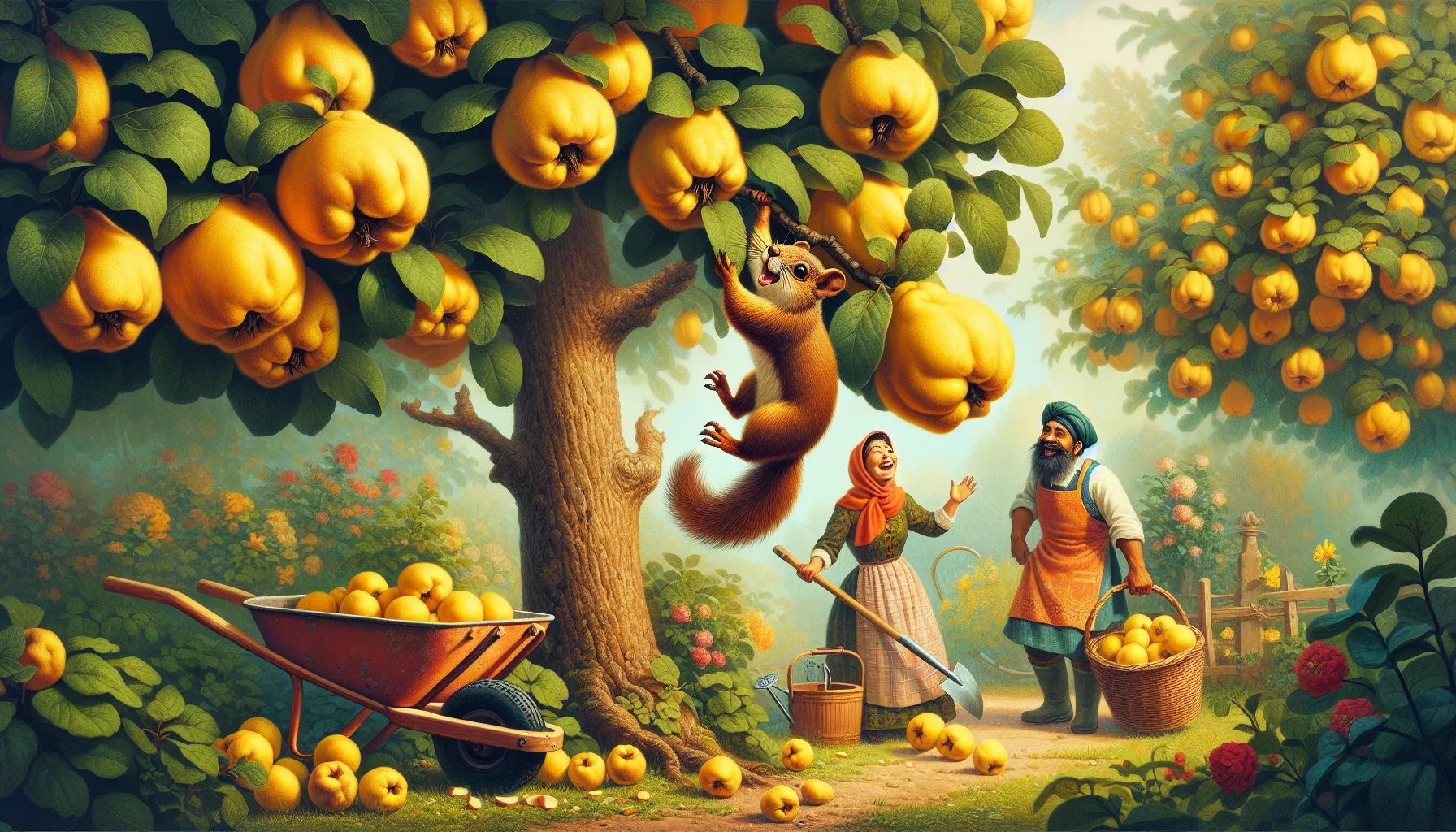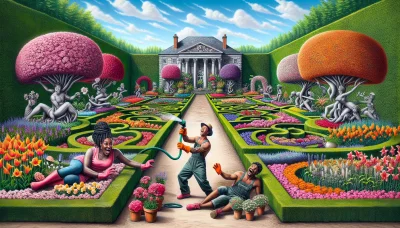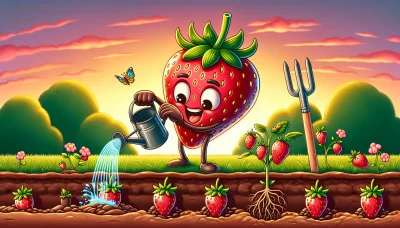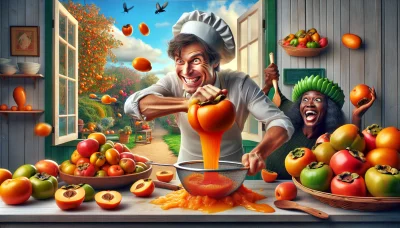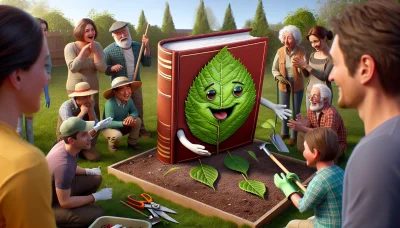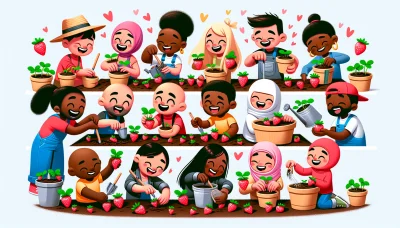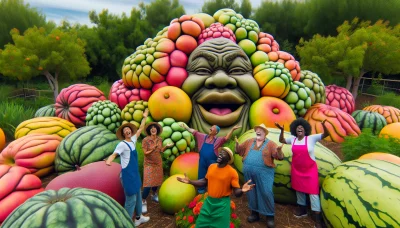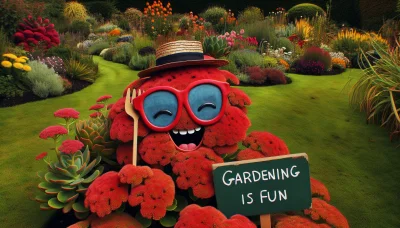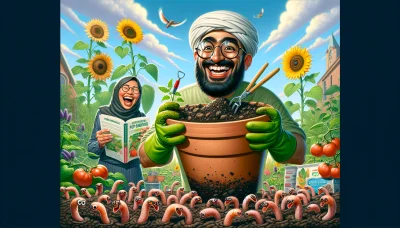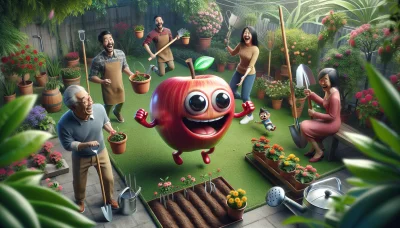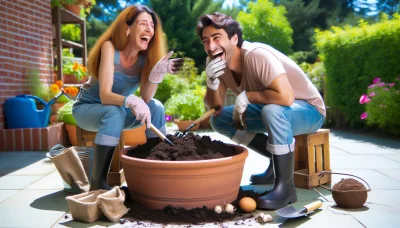Quince season Quiz
Test Your Knowledge
Question of
Understanding Quince Season
Quince season holds a special place in the gardening calendar, marking a period when the quince fruit reaches its peak ripeness and flavor. Typically occurring in late autumn, this season is eagerly anticipated by gardeners and culinary enthusiasts alike. The quince, with its unique aroma and taste, transforms into a versatile ingredient in various dishes, from jams to pies, once it is fully ripe. Gardening during quince season involves careful attention to harvesting times to ensure the fruit is picked at its prime, embodying a blend of cultivation skill and patience. The significance of quince season extends beyond the harvest; it's a time that symbolizes the change of seasons and the preparation for winter, making it a quintessential aspect of the gardening year.
When is Quince Season?
Quince fruits typically come into season from late September through November. This period can vary slightly depending on the local climate and specific growing conditions. Quince is best harvested once they've turned a deep yellow and emit a fragrant aroma.
How to Plant Quince Trees
- Choosing the Right Location
- Find a sunny spot as quince trees require full sun to thrive.
- Ensure the location is sheltered from strong winds which can damage the tree and its fruit.
- Soil Preparation
- Quince trees prefer well-drained soil with a neutral to slightly acidic pH.
- Incorporate plenty of organic matter into the planting site to improve soil fertility and structure.
- Consider conducting a soil test and adjust the pH if necessary.
- Planting Tips
- Plant in the early spring or late fall when the tree is dormant.
- Dig a hole twice as wide and just as deep as the root ball of your quince tree.
- Place the tree in the hole, spreading out the roots gently, and fill the hole with soil, tamping down as you go to remove air pockets.
- Water the tree thoroughly after planting and mulch around the base to retain moisture and regulate soil temperature.
- Stake the tree if necessary to provide support until it becomes established.
Caring for Your Quince Tree During the Season
Quince trees are a delightful addition to any garden, bearing fruit that's perfect for jellies, jams, and other recipes. To ensure your quince tree thrives throughout the growing season, it's important to provide it with the proper care. This includes regular watering, timely fertilizing, and careful pruning.
Watering is crucial, especially during the warmer months. Quince trees require consistent moisture to prevent stress and promote healthy growth. It's best to water deeply once a week, allowing the water to penetrate several inches into the soil. This encourages the roots to grow deeper, making the tree more drought-resistant. However, avoid overwatering as this can lead to root rot.
Fertilizing your quince tree helps to provide the necessary nutrients for its growth and fruit production. In early spring, apply a balanced fertilizer to support the new growth season. If you're unsure of the best type of fertilizer to use, a general-purpose fruit tree fertilizer is a good choice. Be sure to follow the instructions on the label for the correct application rate.
Pruning is another essential aspect of caring for your quince tree. Pruning helps to remove any dead or diseased branches, improve air circulation, and shape the tree for better sunlight exposure. The best time to prune is in late winter or early spring before the new growth starts. Focus on thinning out crowded branches and cutting back any that are growing inward towards the center of the tree.
By following these care tips, your quince tree will be well on its way to producing beautiful fruit and enhancing the beauty of your garden.
Pests and Diseases to Watch Out For
- Quince Curculio: This pest can cause significant fruit damage. Regularly inspect fruit and remove any that are infested to reduce their numbers. Keeping the area around trees clean can also help minimize their impact.
- Codling Moth: They are known for damaging fruits. Use pheromone traps to monitor their presence and apply appropriate insecticides when necessary. Ensuring the removal of old fruits and debris from around the tree can also disrupt their life cycle.
- Fire Blight: This bacterial disease can be devastating. Prune any infected branches well below the infected parts, and sterilize pruning tools after each cut to prevent spreading. Avoid over-fertilizing as excessive nitrogen can increase susceptibility.
- Quince Leaf Blight: This fungal disease causes dark spots on leaves and can lead to premature leaf drop. Improve air circulation around the trees and ensure proper watering techniques to avoid creating conditions that favor its development. Fungicidal sprays may also be necessary.
- Fruit Tree Borer: These pests can damage the trunk and branches. Paint tree trunks with white, water-based paint diluted with water to discourage egg-laying. Regularly inspect trees for signs of damage and remove any affected areas promptly.
- Powdery Mildew: Appears as a white powdery substance on leaves and can weaken the tree. Ensure good air circulation and avoid overhead watering to reduce humidity. Fungicides can be effective when used at the first sign of infection.
Harvesting and Storing Quinces
Quinces are unique fruits that require patience and care to harvest and store properly. Knowing when they are ripe for picking is crucial for their flavor and longevity. Quinces typically mature in late autumn, but the exact timing can vary depending on your climate. A ripe quince will have turned from green to a vibrant yellow and will emit a fragrant aroma. The fruit should still be firm to the touch. It's important not to rush; quinces picked too early can be overly tart and may not ripen off the tree.
Once harvested, storing quinces correctly is key to preserving their delicate aroma and flavor. Quinces are best stored in a cool, dry place. If you have a cellar or a fruit storage room, these are ideal locations. You can store quinces at room temperature, but they should be used within a few weeks before they begin to soften and overripen. For longer storage, quinces can be kept in the refrigerator where they can last for a couple of months. Ensure they are loosely wrapped, or placed in a paper bag to prevent moisture accumulation which can lead to rot.
Another method to extend the shelf life of quinces is to freeze them. Before freezing, wash the quinces, peel and core them, then cut into slices or cubes. Blanching the pieces for about 2 minutes in boiling water can help preserve their color and texture. After blanching, quickly cool the quinces in ice water, drain, and pack them into airtight containers or freezer bags before placing them in the freezer. This method allows you to enjoy the unique flavor of quinces year-round.
Delicious Quince Recipes to Try This Season
| Recipe Name | Ingredients | Preparation Time |
|---|---|---|
| Quince Jelly | Quinces, water, sugar, lemon juice | 4 hours |
| Quince Paste | Quinces, sugar, lemon juice, water | 3 hours |
| Quince Tarte Tatin | Quinces, puff pastry, butter, sugar, cinnamon | 1.5 hours |
| Poached Quince | Quinces, sugar, vanilla pod, lemon peel, cinnamon stick, water | 2 hours |
